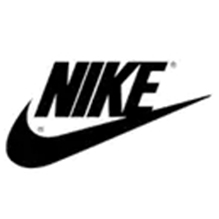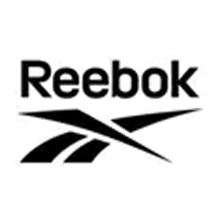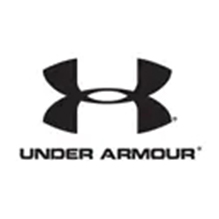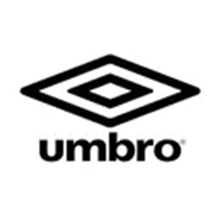-
 15 سنين
15 سنين
الشركة المصنعة لأقمشة الملابس الرياضية المهنيةنجعل الأقمشة الوظيفية مريحة.-
 +86-13586316622
+86-13586316622
-
 [email protected]
[email protected]
-
-
 15 سنين
15 سنين
الشركة المصنعة لأقمشة الملابس الرياضية المهنيةنجعل الأقمشة الوظيفية مريحة.-
 +86-13586316622
+86-13586316622
-
 [email protected]
[email protected]
-
فئة المنتج

مشاهدة الفيديو
هينينينج مينغماو
شركة النسيج المحدودة
نحن من مُصنّعي أقمشة الملابس الرياضية المحترفين. نتميز بجودة البوليستر والنايلون مع أو بدون سباندكس، بالإضافة إلى أقمشة مُركّبة منهما، لملابس اليوغا، والصالات الرياضية، والملابس الرياضية الترفيهية، وأزياء المباريات، والملابس الداخلية.نحن
مصنعو أقمشة البوليستر المحبوكة، مصنع أقمشة الإسباندكس
.يمكن تخصيص أقمشةنا بوظائف مختلفة، مثل الفتيل، والجفاف السريع، ومضاد للبكتيريا، والتبريد، والحماية من الأشعة فوق البنفسجية، وإطلاق التربة، ومقاومة الماء، ومضادة للكهرباء الساكنة عن طريق وظيفة المواد الكيميائية أو الغزل.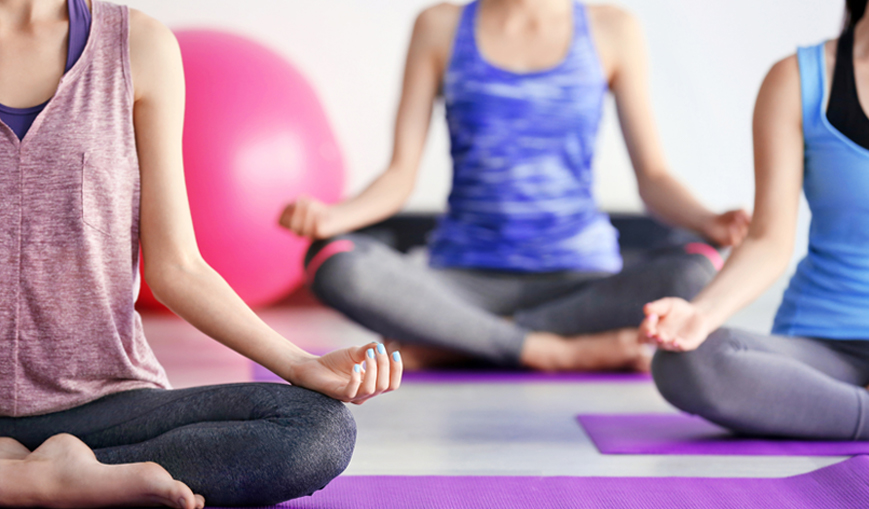
دعونا ننظر إلى خدماتنا
لدينا فريق محترف لضمان حصولك على خدمات عالية الجودة ومدروسة.
-
01جودةتصميم عملية إنتاج صارمة ومراقبة العملية تجعل كل مجموعة من المنتجات أكثر استقرارًا وقابلة للتتبع ، وتحقيق التحكم الفعال في الإنتاج .
-
02فعالية التكلفةيمكن لفريق البحث والتطوير الاحترافي للشركة وفريق الخدمة الفنية تزويد منتجات جديدة باستمرار بأداء أعلى من التكلفة .
-
03سعةلدينا نظام ERP كامل ، وشبكة مبيعات وتخزين جيد التخطيط ، وآلية تشغيل فعالة .
-
04خدمةالالتزام بالخدمة السلس ، وإجراء زيارات في الوقت المناسب ، والاتصالات ، والتعليقات للعملاء ، ومساعدة العملاء على حل المشكلات .
-
05شحنةلدى Haining سلسلة كاملة من صناعة النسيج ، تغطي الألياف الكيميائية ، والنسج ، والطباعة والصباغة ، والملابس وغيرها من الروابط ، وتسليم المنتجات مريحة وسريعة .3
آخر الأخبار والرؤى
-
ما هي الألياف الأساسية المستخدمة في أقمشة الملابس الرياضية في City Leisure؟
 11/10/2025
11/10/2025
 Mingmao
ملابس رياضية ترفيهية للمدينة لقد أصبح عنصرًا أساسيًا في ملابس نمط الحياة العصرية، حيث يمزج بين الراحة والأداء والأناقة. سواء كان ذلك للنزهات غير الرسمية أو التمارين الخفيفة أو التنقل في المناطق الحضرية، فإن اختيار القماش يلعب دورًا حاسمًا في الأداء الوظيفي والجاذبية الجمالية للملابس الرياضية. أحد أهم العوامل في اختيار القماش هو نوع القماش الفيبر مستخدم. تضفي الألياف المختلفة خصائص فريدة مثل التمدد والتهوية والمتانة والتحكم في الرطوبة وسهولة العناية، مما يجعلها ضرورية لتصميم الملابس الرياضية الترفيهية في المدينة. 1. البوليستر البوليستر هي واحدة من الألياف الأكثر استخدامًا على نطاق واسع في الملابس الرياضية الترفيهية في المدينة نظرًا لتعدد استخداماتها ومتانتها. وتشمل خصائصه الرئيسية ما يلي: القوة والمتانة: مقاوم للتمزق والتمدد، مما يجعل الملابس تدوم طويلاً. فتل الرطوبة: يحرك العرق بعيدًا عن الجلد ليحافظ على جفاف مرتديه وراحته. التجفيف السريع: مثالية للاستخدام النشط أو البيئات الحضرية الرطبة. ثبات اللون: يحافظ على الألوان النابضة بالحياة حتى بعد الغسيل المتكرر والتعرض لأشعة الشمس. رعاية سهلة: مقاوم للتجاعيد والانكماش، مما يجعل الملابس مناسبة للارتداء اليومي. غالبًا ما يستخدم البوليستر في يمتزج مع الألياف الطبيعية أو سباندكس لتحسين التمدد والراحة والتهوية، مما يجعلها أليافًا أساسية لأقمشة الملابس الرياضية. 2. القطن قطن لا تزال الألياف الطبيعية شائعة الاستخدام في الملابس الرياضية الترفيهية في المدينة بسبب نعومتها وقابليتها للتهوية. تشمل الخصائص الرئيسية ما يلي: شعور مريح: ناعم ولطيف على البشرة، مثالي للارتداء الكاجوال طوال اليوم. برياثابيليتي: يسمح بتدوير الهواء، ويمنع ارتفاع درجة الحرارة أثناء النشاط البدني الخفيف. امتصاص الرطوبة: تمتص العرق بشكل فعال، على الرغم من أنها أبطأ في الجفاف من الألياف الصناعية. الملمس الطبيعي: يوفر مظهرًا وإحساسًا متميزًا للملابس الترفيهية الحضرية. القطن في كثير من الأحيان ممزوج بالبوليستر أو السباندكس يجمع بين الراحة والمتانة المعززة والمرونة وإدارة الرطوبة. 3. سبانديكس / إلاستين دنة (المعروف أيضًا باسم الإيلاستين أو الليكرا) يتم دمجه بشكل شائع في أقمشة الملابس الرياضية الترفيهية لتوفيرها تمتد والمرونة . وتشمل فوائدها الرئيسية ما يلي: مرونة: يوفر تمددًا وانتعاشًا فائقين، مما يسمح بحرية الحركة في الأنشطة اليومية أو التدريبات الخفيفة. الاحتفاظ بالشكل: يساعد الملابس على الحفاظ على شكلها بعد التمدد أو الغسيل المتكرر. الراحة الملائمة: يضمن ملابس مريحة ولكن مريحة للبيئات الحضرية. نادرًا ما يُستخدم الإسباندكس بمفرده؛ هو عادة ممزوج بنسب صغيرة (3-10%) مع البوليستر أو القطن ، مما يضيف تمددًا دون المساس بمتانة القماش أو مظهره. 4. نايلون نايلون هي ألياف صناعية أخرى تقدر قيمتها بخصائصها القوة ومقاومة التآكل والشعور بخفة الوزن . خصائصه تشمل: متانة: مقاومة عالية للتمزق، مثالية للملابس الرياضية المعرضة للحركة المتكررة. إدارة الرطوبة: يمتص العرق بكفاءة، ويحافظ على جفاف مرتديه. ملمس ناعم: يوفر مظهرًا أنيقًا، وغالبًا ما يستخدم في السراويل الضيقة والركض والملابس الرياضية الحضرية. التجفيف السريع: يجعل الملابس مناسبة للارتداء في الهواء الطلق والعبور في المدن. غالبًا ما يتم مزج النايلون مع ألياف لدنة لتوفير كليهما القوة وتمتد ، وتعزيز الأداء والراحة. 5. الألياف المخلوطة يتم استخدام العديد من أقمشة الملابس الرياضية الترفيهية في المدينة الألياف المخلوطة للجمع بين مزايا المواد المختلفة. تشمل الخلطات الشائعة ما يلي: البوليستر-Cotton: يجمع بين المتانة وثبات اللون والراحة. البوليستر-Spandex or Nylon-Spandex: يضيف المرونة ويحافظ على الشكل ويتحكم في الرطوبة. قطن-Spandex: يوفر ملمسًا ناعمًا مع تمدد خفيف، ومناسب للسراويل الضيقة الكاجوال أو القمصان العلوية الملائمة. تسمح الخلطات للمصممين بإنشاء أقمشة تلتقي احتياجات الأداء المحددة وتفضيلات الأسلوب ومتطلبات الراحة مما يجعلها مثالية للملابس الترفيهية الحضرية. 6. الألياف المتخصصة أو الوظيفية بالإضافة إلى الألياف التقليدية. ألياف وظيفية يتم استخدامها بشكل متزايد في الملابس الرياضية الترفيهية في المدينة لتعزيز الأداء: الخيزران أو ايوسل: ألياف طبيعية ذات امتصاص ممتاز للرطوبة وملمس ناعم. البوليستر المعاد تدويره: خيار صديق للبيئة مع متانة مماثلة وخصائص ماصة للرطوبة. ألياف مضادة للرائحة أو مضادة للميكروبات: يمنع تراكم الروائح أثناء الارتداء لفترات طويلة. ألياف مقاومة للأشعة فوق البنفسجية: توفير الحماية للأنشطة الحضرية في الهواء الطلق. غالبًا ما يتم دمج هذه الألياف مع الألياف السائدة لإنتاجها أقمشة ترفيهية مبتكرة وعالية الأداء لأنماط الحياة في المدينة الحديثة. 7. الاستنتاج تشمل الألياف الأساسية المستخدمة في أقمشة الملابس الرياضية الترفيهية في المدينة البوليستر والقطن والياف لدنة والنايلون ، غالبًا في مزيج مختلف لتحقيق الراحة والأداء والأناقة الأمثل. البوليستر: متين، ماص للرطوبة، وسهل العناية به. قطن: ناعم ومسامي ومريح للارتداء اليومي. دنة/Elastane: يضيف التمدد والمرونة لحرية الحركة. نايلون: خفيف الوزن، ومقاوم للتآكل، وسلس للتصميمات الأنيقة. يتيح مزج هذه الألياف للمصنعين تصميم الأقمشة خصيصًا لها الأنشطة الحضرية والراحة غير الرسمية والجماليات الحديثة ، مع دمج الخصائص المتقدمة مثل إدارة الرطوبة، والتمدد، والمتانة، والصداقة للبيئة. إن فهم خصائص كل ألياف يساعد المستهلكين والمصممين على اختيار القماش المناسب للملابس الرياضية الترفيهية في المدينة، مما يضمن الحصول على ملابس عملية وأنيقة.
Mingmao
ملابس رياضية ترفيهية للمدينة لقد أصبح عنصرًا أساسيًا في ملابس نمط الحياة العصرية، حيث يمزج بين الراحة والأداء والأناقة. سواء كان ذلك للنزهات غير الرسمية أو التمارين الخفيفة أو التنقل في المناطق الحضرية، فإن اختيار القماش يلعب دورًا حاسمًا في الأداء الوظيفي والجاذبية الجمالية للملابس الرياضية. أحد أهم العوامل في اختيار القماش هو نوع القماش الفيبر مستخدم. تضفي الألياف المختلفة خصائص فريدة مثل التمدد والتهوية والمتانة والتحكم في الرطوبة وسهولة العناية، مما يجعلها ضرورية لتصميم الملابس الرياضية الترفيهية في المدينة. 1. البوليستر البوليستر هي واحدة من الألياف الأكثر استخدامًا على نطاق واسع في الملابس الرياضية الترفيهية في المدينة نظرًا لتعدد استخداماتها ومتانتها. وتشمل خصائصه الرئيسية ما يلي: القوة والمتانة: مقاوم للتمزق والتمدد، مما يجعل الملابس تدوم طويلاً. فتل الرطوبة: يحرك العرق بعيدًا عن الجلد ليحافظ على جفاف مرتديه وراحته. التجفيف السريع: مثالية للاستخدام النشط أو البيئات الحضرية الرطبة. ثبات اللون: يحافظ على الألوان النابضة بالحياة حتى بعد الغسيل المتكرر والتعرض لأشعة الشمس. رعاية سهلة: مقاوم للتجاعيد والانكماش، مما يجعل الملابس مناسبة للارتداء اليومي. غالبًا ما يستخدم البوليستر في يمتزج مع الألياف الطبيعية أو سباندكس لتحسين التمدد والراحة والتهوية، مما يجعلها أليافًا أساسية لأقمشة الملابس الرياضية. 2. القطن قطن لا تزال الألياف الطبيعية شائعة الاستخدام في الملابس الرياضية الترفيهية في المدينة بسبب نعومتها وقابليتها للتهوية. تشمل الخصائص الرئيسية ما يلي: شعور مريح: ناعم ولطيف على البشرة، مثالي للارتداء الكاجوال طوال اليوم. برياثابيليتي: يسمح بتدوير الهواء، ويمنع ارتفاع درجة الحرارة أثناء النشاط البدني الخفيف. امتصاص الرطوبة: تمتص العرق بشكل فعال، على الرغم من أنها أبطأ في الجفاف من الألياف الصناعية. الملمس الطبيعي: يوفر مظهرًا وإحساسًا متميزًا للملابس الترفيهية الحضرية. القطن في كثير من الأحيان ممزوج بالبوليستر أو السباندكس يجمع بين الراحة والمتانة المعززة والمرونة وإدارة الرطوبة. 3. سبانديكس / إلاستين دنة (المعروف أيضًا باسم الإيلاستين أو الليكرا) يتم دمجه بشكل شائع في أقمشة الملابس الرياضية الترفيهية لتوفيرها تمتد والمرونة . وتشمل فوائدها الرئيسية ما يلي: مرونة: يوفر تمددًا وانتعاشًا فائقين، مما يسمح بحرية الحركة في الأنشطة اليومية أو التدريبات الخفيفة. الاحتفاظ بالشكل: يساعد الملابس على الحفاظ على شكلها بعد التمدد أو الغسيل المتكرر. الراحة الملائمة: يضمن ملابس مريحة ولكن مريحة للبيئات الحضرية. نادرًا ما يُستخدم الإسباندكس بمفرده؛ هو عادة ممزوج بنسب صغيرة (3-10%) مع البوليستر أو القطن ، مما يضيف تمددًا دون المساس بمتانة القماش أو مظهره. 4. نايلون نايلون هي ألياف صناعية أخرى تقدر قيمتها بخصائصها القوة ومقاومة التآكل والشعور بخفة الوزن . خصائصه تشمل: متانة: مقاومة عالية للتمزق، مثالية للملابس الرياضية المعرضة للحركة المتكررة. إدارة الرطوبة: يمتص العرق بكفاءة، ويحافظ على جفاف مرتديه. ملمس ناعم: يوفر مظهرًا أنيقًا، وغالبًا ما يستخدم في السراويل الضيقة والركض والملابس الرياضية الحضرية. التجفيف السريع: يجعل الملابس مناسبة للارتداء في الهواء الطلق والعبور في المدن. غالبًا ما يتم مزج النايلون مع ألياف لدنة لتوفير كليهما القوة وتمتد ، وتعزيز الأداء والراحة. 5. الألياف المخلوطة يتم استخدام العديد من أقمشة الملابس الرياضية الترفيهية في المدينة الألياف المخلوطة للجمع بين مزايا المواد المختلفة. تشمل الخلطات الشائعة ما يلي: البوليستر-Cotton: يجمع بين المتانة وثبات اللون والراحة. البوليستر-Spandex or Nylon-Spandex: يضيف المرونة ويحافظ على الشكل ويتحكم في الرطوبة. قطن-Spandex: يوفر ملمسًا ناعمًا مع تمدد خفيف، ومناسب للسراويل الضيقة الكاجوال أو القمصان العلوية الملائمة. تسمح الخلطات للمصممين بإنشاء أقمشة تلتقي احتياجات الأداء المحددة وتفضيلات الأسلوب ومتطلبات الراحة مما يجعلها مثالية للملابس الترفيهية الحضرية. 6. الألياف المتخصصة أو الوظيفية بالإضافة إلى الألياف التقليدية. ألياف وظيفية يتم استخدامها بشكل متزايد في الملابس الرياضية الترفيهية في المدينة لتعزيز الأداء: الخيزران أو ايوسل: ألياف طبيعية ذات امتصاص ممتاز للرطوبة وملمس ناعم. البوليستر المعاد تدويره: خيار صديق للبيئة مع متانة مماثلة وخصائص ماصة للرطوبة. ألياف مضادة للرائحة أو مضادة للميكروبات: يمنع تراكم الروائح أثناء الارتداء لفترات طويلة. ألياف مقاومة للأشعة فوق البنفسجية: توفير الحماية للأنشطة الحضرية في الهواء الطلق. غالبًا ما يتم دمج هذه الألياف مع الألياف السائدة لإنتاجها أقمشة ترفيهية مبتكرة وعالية الأداء لأنماط الحياة في المدينة الحديثة. 7. الاستنتاج تشمل الألياف الأساسية المستخدمة في أقمشة الملابس الرياضية الترفيهية في المدينة البوليستر والقطن والياف لدنة والنايلون ، غالبًا في مزيج مختلف لتحقيق الراحة والأداء والأناقة الأمثل. البوليستر: متين، ماص للرطوبة، وسهل العناية به. قطن: ناعم ومسامي ومريح للارتداء اليومي. دنة/Elastane: يضيف التمدد والمرونة لحرية الحركة. نايلون: خفيف الوزن، ومقاوم للتآكل، وسلس للتصميمات الأنيقة. يتيح مزج هذه الألياف للمصنعين تصميم الأقمشة خصيصًا لها الأنشطة الحضرية والراحة غير الرسمية والجماليات الحديثة ، مع دمج الخصائص المتقدمة مثل إدارة الرطوبة، والتمدد، والمتانة، والصداقة للبيئة. إن فهم خصائص كل ألياف يساعد المستهلكين والمصممين على اختيار القماش المناسب للملابس الرياضية الترفيهية في المدينة، مما يضمن الحصول على ملابس عملية وأنيقة. -
دور أقمشة الملابس الداخلية في إدارة الرطوبة والتهوية
 01/10/2025
01/10/2025
 Mingmao
الملابس الداخلية هي أكثر من مجرد فئة ملابس حميمة؛ إنه مزيج من الراحة والجماليات والوظائف. من بين العوامل العديدة التي تحدد جودة الملابس الداخلية، يلعب اختيار القماش دورًا رئيسيًا. أحد أهم جوانب أداء أقمشة الملابس الداخلية هو قدرتها على التحكم في الرطوبة والسماح بالتهوية. نظرًا لأنه يتم ارتداء الملابس الداخلية بالقرب من الجلد، غالبًا لفترات طويلة، فإن الطريقة التي تتعامل بها الأقمشة مع العرق وتدفق الهواء وراحة الجلد لها تأثير مباشر على تجربة مرتديها. لماذا تعتبر إدارة الرطوبة مهمة في الملابس الداخلية يقوم جسم الإنسان بشكل طبيعي بإطلاق الرطوبة على شكل عرق وبخار. لو أقمشة الملابس الداخلية يحبس هذه الرطوبة، ويمكن أن يسبب عدم الراحة أو التهيج أو حتى مشاكل الجلد. تضمن إدارة الرطوبة المناسبة امتصاص العرق أو التخلص منه أو تبخره بكفاءة، مما يساعد مرتديه على الشعور بالجفاف والراحة. بالإضافة إلى ذلك، غالبًا ما تشتمل الملابس الداخلية على تصميمات دقيقة مثل ألواح الدانتيل، وإدخالات شبكية، وزخارف من الساتان. يتطلب تحقيق التوازن بين الأناقة والأداء اختيارًا دقيقًا للأقمشة التي تحافظ على الجمال والأداء الوظيفي. كيف تساهم الأقمشة في التهوية تشير قابلية التنفس إلى قدرة القماش على السماح بتدوير الهواء ونقل بخار الرطوبة. الأقمشة المستخدمة في الملابس الداخلية تحقق ذلك بعدة طرق: 1. الألياف الطبيعية قطن : تتميز الملابس الداخلية القطنية بنعومتها وامتصاصها العالي، فهي تمتص العرق بشكل فعال وتسمح للهواء بالمرور من خلالها. وهذا يجعلها جيدة التهوية ومناسبة للارتداء اليومي. الحرير : ألياف طبيعية فاخرة، الحرير ينظم درجة الحرارة بشكل جيد ويسمح للبشرة بالتنفس، رغم أنه يتطلب رعاية دقيقة. 2. الألياف الصناعية مزيج من النايلون والبوليستر : غالبًا ما يتم تصميمها بتشطيبات ماصة للرطوبة تسحب العرق بعيدًا عن الجلد نحو السطح الخارجي، حيث يمكن أن يتبخر بسرعة أكبر. سباندكس (الإيلاستين) : يتم مزجه بشكل متكرر مع ألياف أخرى، ويضيف الألياف اللدنة التمدد مع الحفاظ على تدفق الهواء عند دمجه مع الأقمشة ذات النسيج المفتوح. 3. الأقمشة المتخصصة مش : بفضل هيكله المفتوح، يعزز النسيج الشبكي التهوية، مما يجعله شائعًا في تصميمات الملابس الداخلية التي تؤكد على الأسلوب والأداء البارد. ستوكات : تخلق الألياف الاصطناعية الدقيقة للغاية نسيجًا ناعمًا خفيف الوزن ومساميًا وسريع الجفاف، وغالبًا ما يستخدم في الملابس الداخلية الحديثة. هيكل النسيج والتحكم في الرطوبة أبعد من نوع الألياف، و هيكل نسج أو متماسكة تلعب أقمشة الملابس الداخلية دورًا حاسمًا في إدارة الرطوبة: نسج مفتوحة مثل الدانتيل والشبكة تعمل على تحسين تدفق الهواء، مما يسمح للحرارة والرطوبة بالهروب. أقمشة متماسكة مع خصائص ماصة للرطوبة تنقل العرق بعيدًا عن الجلد. الانشاءات الطبقات تجمع بين الأقمشة الداخلية الماصة والطبقات الخارجية سريعة الجفاف لتعزيز الراحة. التوازن بين الجماليات والوظيفة يسعى تصميم الملابس الداخلية الحديثة إلى تحقيق الانسجام بين الجاذبية الحسية والأداء. على سبيل المثال، توفر حمالة الصدر المصنوعة من الدانتيل والمبطنة بطبقة قطنية قابلة للتنفس الأناقة دون التضحية بالراحة. وبالمثل، تجمع السراويل الداخلية المصنوعة من الألياف الدقيقة بين المظهر الناعم والأنيق مع خصائص امتصاص الرطوبة والتهوية، مما يجعلها مثالية للارتداء اليومي. التقدم في أقمشة الملابس الداخلية لقد ساهمت الابتكارات الحديثة في منسوجات الملابس الداخلية في تعزيز إدارة الرطوبة والتهوية: لمسات نهائية ماصة للرطوبة يتم تطبيقه على الألياف الاصطناعية لتحسين الأداء. العلاجات المضادة للميكروبات منع تراكم الرائحة الناجمة عن الرطوبة المحاصرة. الأقمشة المستدامة مثل الخيزران والمودال توفر النعومة والتهوية والجاذبية الصديقة للبيئة. خاتمة يتم اختيار أقمشة الملابس الداخلية بعناية ليس فقط لجمالها البصري ولكن أيضًا لقدرتها على تنظيم الرطوبة ودعم التهوية. سواء كانت مصنوعة من القطن الطبيعي، أو الحرير الفاخر، أو الألياف الدقيقة الهندسية، أو شبكة مسامية، فإن هذه الأقمشة تحافظ على جفاف الجلد، وتقلل من الانزعاج، وتعزز تجربة الارتداء بشكل عام. مع تقدم الابتكار في مجال المنسوجات، تستمر الملابس الداخلية في التطور إلى ملابس ليست أنيقة فحسب، بل أيضًا عملية للغاية، مما يضمن الراحة في كل موقف.
Mingmao
الملابس الداخلية هي أكثر من مجرد فئة ملابس حميمة؛ إنه مزيج من الراحة والجماليات والوظائف. من بين العوامل العديدة التي تحدد جودة الملابس الداخلية، يلعب اختيار القماش دورًا رئيسيًا. أحد أهم جوانب أداء أقمشة الملابس الداخلية هو قدرتها على التحكم في الرطوبة والسماح بالتهوية. نظرًا لأنه يتم ارتداء الملابس الداخلية بالقرب من الجلد، غالبًا لفترات طويلة، فإن الطريقة التي تتعامل بها الأقمشة مع العرق وتدفق الهواء وراحة الجلد لها تأثير مباشر على تجربة مرتديها. لماذا تعتبر إدارة الرطوبة مهمة في الملابس الداخلية يقوم جسم الإنسان بشكل طبيعي بإطلاق الرطوبة على شكل عرق وبخار. لو أقمشة الملابس الداخلية يحبس هذه الرطوبة، ويمكن أن يسبب عدم الراحة أو التهيج أو حتى مشاكل الجلد. تضمن إدارة الرطوبة المناسبة امتصاص العرق أو التخلص منه أو تبخره بكفاءة، مما يساعد مرتديه على الشعور بالجفاف والراحة. بالإضافة إلى ذلك، غالبًا ما تشتمل الملابس الداخلية على تصميمات دقيقة مثل ألواح الدانتيل، وإدخالات شبكية، وزخارف من الساتان. يتطلب تحقيق التوازن بين الأناقة والأداء اختيارًا دقيقًا للأقمشة التي تحافظ على الجمال والأداء الوظيفي. كيف تساهم الأقمشة في التهوية تشير قابلية التنفس إلى قدرة القماش على السماح بتدوير الهواء ونقل بخار الرطوبة. الأقمشة المستخدمة في الملابس الداخلية تحقق ذلك بعدة طرق: 1. الألياف الطبيعية قطن : تتميز الملابس الداخلية القطنية بنعومتها وامتصاصها العالي، فهي تمتص العرق بشكل فعال وتسمح للهواء بالمرور من خلالها. وهذا يجعلها جيدة التهوية ومناسبة للارتداء اليومي. الحرير : ألياف طبيعية فاخرة، الحرير ينظم درجة الحرارة بشكل جيد ويسمح للبشرة بالتنفس، رغم أنه يتطلب رعاية دقيقة. 2. الألياف الصناعية مزيج من النايلون والبوليستر : غالبًا ما يتم تصميمها بتشطيبات ماصة للرطوبة تسحب العرق بعيدًا عن الجلد نحو السطح الخارجي، حيث يمكن أن يتبخر بسرعة أكبر. سباندكس (الإيلاستين) : يتم مزجه بشكل متكرر مع ألياف أخرى، ويضيف الألياف اللدنة التمدد مع الحفاظ على تدفق الهواء عند دمجه مع الأقمشة ذات النسيج المفتوح. 3. الأقمشة المتخصصة مش : بفضل هيكله المفتوح، يعزز النسيج الشبكي التهوية، مما يجعله شائعًا في تصميمات الملابس الداخلية التي تؤكد على الأسلوب والأداء البارد. ستوكات : تخلق الألياف الاصطناعية الدقيقة للغاية نسيجًا ناعمًا خفيف الوزن ومساميًا وسريع الجفاف، وغالبًا ما يستخدم في الملابس الداخلية الحديثة. هيكل النسيج والتحكم في الرطوبة أبعد من نوع الألياف، و هيكل نسج أو متماسكة تلعب أقمشة الملابس الداخلية دورًا حاسمًا في إدارة الرطوبة: نسج مفتوحة مثل الدانتيل والشبكة تعمل على تحسين تدفق الهواء، مما يسمح للحرارة والرطوبة بالهروب. أقمشة متماسكة مع خصائص ماصة للرطوبة تنقل العرق بعيدًا عن الجلد. الانشاءات الطبقات تجمع بين الأقمشة الداخلية الماصة والطبقات الخارجية سريعة الجفاف لتعزيز الراحة. التوازن بين الجماليات والوظيفة يسعى تصميم الملابس الداخلية الحديثة إلى تحقيق الانسجام بين الجاذبية الحسية والأداء. على سبيل المثال، توفر حمالة الصدر المصنوعة من الدانتيل والمبطنة بطبقة قطنية قابلة للتنفس الأناقة دون التضحية بالراحة. وبالمثل، تجمع السراويل الداخلية المصنوعة من الألياف الدقيقة بين المظهر الناعم والأنيق مع خصائص امتصاص الرطوبة والتهوية، مما يجعلها مثالية للارتداء اليومي. التقدم في أقمشة الملابس الداخلية لقد ساهمت الابتكارات الحديثة في منسوجات الملابس الداخلية في تعزيز إدارة الرطوبة والتهوية: لمسات نهائية ماصة للرطوبة يتم تطبيقه على الألياف الاصطناعية لتحسين الأداء. العلاجات المضادة للميكروبات منع تراكم الرائحة الناجمة عن الرطوبة المحاصرة. الأقمشة المستدامة مثل الخيزران والمودال توفر النعومة والتهوية والجاذبية الصديقة للبيئة. خاتمة يتم اختيار أقمشة الملابس الداخلية بعناية ليس فقط لجمالها البصري ولكن أيضًا لقدرتها على تنظيم الرطوبة ودعم التهوية. سواء كانت مصنوعة من القطن الطبيعي، أو الحرير الفاخر، أو الألياف الدقيقة الهندسية، أو شبكة مسامية، فإن هذه الأقمشة تحافظ على جفاف الجلد، وتقلل من الانزعاج، وتعزز تجربة الارتداء بشكل عام. مع تقدم الابتكار في مجال المنسوجات، تستمر الملابس الداخلية في التطور إلى ملابس ليست أنيقة فحسب، بل أيضًا عملية للغاية، مما يضمن الراحة في كل موقف. -
كيف يمكن تحسين أقمشة الملابس الداخلية لتناسب البشرة الحساسة وخصائص مضادة للحساسية؟
 22/09/2025
22/09/2025
 Mingmao
لا تتعلق الملابس الداخلية بالجمال والراحة فحسب، بل تتعلق أيضًا بضمان جودة الأقمشة آمنة ولطيفة على الجلد ، خاصة للأفراد ذوي البشرة الحساسة أو المتفاعلة. يلعب اختيار النسيج ومعالجته وبنائه أدوارًا حاسمة في تقليل التهيج وردود الفعل التحسسية والانزعاج. يتضمن تحسين أقمشة الملابس الداخلية لتناسب البشرة الحساسة وخصائص مضادة للحساسية اختيارًا دقيقًا للمواد وعمليات التشطيب والاهتمام بتصميم الملابس. 1. اختيار الأقمشة الأساسية الصحيحة يبدأ أساس الملابس الداخلية المضادة للحساسية بـ اختيار ألياف ناعمة أو طبيعية أو صديقة للبشرة : قطن : خفيف الوزن، ومسامي، وناعم بشكل طبيعي، القطن مثالي للبشرة الحساسة. القطن العضوي مناسب بشكل خاص كما هو نمت بدون مبيدات حشرية أو مواد كيميائية قاسية . الحرير : حرير ناعم ولا يسبب الحساسية بشكل طبيعي، ويقلل الاحتكاك والتهيج في المناطق الحساسة. ويفضل حرير التوت بسبب أليافه الطويلة والموحدة. ألياف الخيزران : أقمشة الخيزران الناعمة والمضادة للبكتيريا بشكل طبيعي، جيدة التهوية للغاية وتقلل من خطر التهيج. مشروط أو ايوسل : ألياف السليلوز المجددة هذه لطيفة وممتصة للرطوبة وأقل عرضة لإثارة تفاعلات الجلد. الأقمشة الاصطناعية يمكن استخدام النايلون أو البوليستر إذا تمت معالجته بعناية أو مزجه مع ألياف طبيعية، ولكنها قد تحبس الحرارة أو الرطوبة إذا كانت التهوية سيئة، مما قد يسبب تهيج الجلد. 2. التقليل من المواد الكيميائية المسببة للحساسية يمكن تقديم معالجة النسيج والتشطيب المواد المسببة للحساسية أو المهيجات لذا فإن الملابس الداخلية المضادة للحساسية تتطلب ما يلي: أصباغ منخفضة التأثير : تجنب أصباغ الآزو أو الملونات الكيميائية القاسية يقلل من خطر الحساسية. تشطيبات خالية من الفورمالديهايد : العلاجات المعتمدة على الفورمالديهايد المستخدمة لتقليل التجاعيد أو الانكماش يمكن أن تهيج البشرة الحساسة. تجنب الرقائق القاسية : قد تبدو منعمات الأقمشة أو طبقات السيليكون ناعمة ولكنها يمكن أن تسبب التهاب الجلد لدى الأفراد الحساسين. معايير التصديق : تضمن شهادة OEKO-TEX® Standard 100 أو GOTS (المعيار العالمي للنسيج العضوي) اختبار الأقمشة بحثًا عن المواد الضارة. 3. النعومة والسلاسة والتصميم السلس تستفيد البشرة الحساسة من الأقمشة التي تقلل الاحتكاك والغضب ونقاط الضغط : القوام السلس : الأقمشة مثل الحرير والساتان والألياف الدقيقة والدانتيل الناعم ذو الحواف الناعمة تمنع التهيج. طبقات سلسة أو مسطحة : تقليل الدرزات المرتفعة والخياطة والتطريز في مناطق التلامس يقلل من الاحتكاك. أغلفة مرنة : إن تغليف الأشرطة المطاطية أو استخدام الأقمشة الناعمة القابلة للتمدد يمنع نقاط الضغط والقرص. حتى الألياف المضادة للحساسية القابلة للتنفس يمكن أن تهيج الجلد إذا حدث ذلك في الملابس خياطة خشنة، أو دانتيل خشن، أو أشرطة مطاطية ضيقة . 4. إدارة الرطوبة والتهوية هيبوالرجينيك أقمشة الملابس الداخلية يجب إدارة الرطوبة والحفاظ على تدفق الهواء لتقليل التهيج والنمو الميكروبي: ألياف ماصة للرطوبة : مزيج الخيزران واليوسل وبعض الألياف الدقيقة يسحب الرطوبة بعيدًا عن الجلد، مما يحافظ على جفاف المناطق. نسج قابلة للتنفس : الأقمشة المحبوكة مثل القطن خفيف الوزن أو الشبكة تسمح بتدفق الهواء وتقليل تراكم الحرارة. التشطيبات المضادة للميكروبات : يمكن أن تساعد العلاجات المشتقة طبيعيًا، مثل فحم الخيزران أو أيونات الفضة، في منع نمو البكتيريا دون استخدام مواد كيميائية قاسية. تعتبر الإدارة السليمة للرطوبة أمرًا بالغ الأهمية بالنسبة منع الطفح الجلدي، والحكة، أو تهيج فطري في المناطق الحساسة. 5. تمتد، وتناسب، ومرونة لطيفة اختيار ألياف مرنة وتمتد النسيج يمكن أن يقلل من إجهاد الجلد: مزيج من ألياف لدنة أو إيلاستين : كميات صغيرة من الألياف المطاطية توفر الاحتفاظ بالشكل دون إحكام مفرط. المطاطية المغطاة الناعمة : التغطية المرنة بالقماش تمنع التلامس المباشر مع الجلد والاحتكاك. مناسبا : الملابس الداخلية المجهزة جيدًا تتجنب الاحتكاك أو القرص غير الضروري، مما قد يؤدي إلى تهيج حتى مع الأقمشة المضادة للحساسية. 6. الابتكارات المستدامة ومضادة للحساسية تركز التطورات الأخيرة في أقمشة الملابس الداخلية على كليهما الاستدامة والصديقة للبشرة : ألياف عضوية وصديقة للبيئة تقليل التعرض للمواد الكيميائية والأثر البيئي. الأصباغ والتشطيبات النباتية تقليل احتمالات الحساسية. الألياف المعاد تدويرها أو المجددة مثل Tencel أو modal توفر خيارات لطيفة وقابلة للتنفس للبشرة الحساسة. علاجات مضادة للميكروبات ومقاومة للرائحة باستخدام عوامل طبيعية مثل مستخلصات الشيتوزان أو الخيزران، يحافظ على النظافة دون استخدام مواد كيميائية قاسية. 7. نصائح لصيانة الملابس الداخلية المضادة للحساسية حتى الأقمشة المُحسّنة تتطلب عناية دقيقة للحفاظ على خصائصها المضادة للحساسية: استخدم منظفات خفيفة : تجنب المنظفات الكيميائية القوية أو مواد التبييض أو منعمات الأقمشة. يُغسل بالماء البارد أو الفاتر : يمكن أن يؤدي الماء الساخن إلى تحطيم الألياف أو التشطيبات وزيادة خطر التهيج. جفف بالهواء عندما يكون ذلك ممكنًا : قد يؤدي التجفيف بالحرارة العالية إلى إتلاف الألياف الرقيقة وتقليل النعومة. ملابس داخلية حساسة منفصلة : تجنب الاحتكاك بالسحابات أو الأقمشة الخشنة أثناء الغسيل. خاتمة يتضمن تحسين أقمشة الملابس الداخلية للبشرة الحساسة وخصائص مضادة للحساسية اختيار ألياف لطيفة، وتقليل التعرض للمواد الكيميائية، وضمان الملمس الناعم، وتعزيز التهوية . من خلال الجمع بين الألياف الطبيعية أو المعالجة وتصميم الملابس المدروس والصيانة الدقيقة، يمكن للملابس الداخلية أن تكون على حد سواء مريحة وآمنة للبشرة الحساسة . لا تعمل هذه الاعتبارات على تحسين راحة مرتديها فحسب، بل تتماشى أيضًا مع الطلب المتزايد على الملابس ملابس حميمية مستدامة واعية بالصحة .
Mingmao
لا تتعلق الملابس الداخلية بالجمال والراحة فحسب، بل تتعلق أيضًا بضمان جودة الأقمشة آمنة ولطيفة على الجلد ، خاصة للأفراد ذوي البشرة الحساسة أو المتفاعلة. يلعب اختيار النسيج ومعالجته وبنائه أدوارًا حاسمة في تقليل التهيج وردود الفعل التحسسية والانزعاج. يتضمن تحسين أقمشة الملابس الداخلية لتناسب البشرة الحساسة وخصائص مضادة للحساسية اختيارًا دقيقًا للمواد وعمليات التشطيب والاهتمام بتصميم الملابس. 1. اختيار الأقمشة الأساسية الصحيحة يبدأ أساس الملابس الداخلية المضادة للحساسية بـ اختيار ألياف ناعمة أو طبيعية أو صديقة للبشرة : قطن : خفيف الوزن، ومسامي، وناعم بشكل طبيعي، القطن مثالي للبشرة الحساسة. القطن العضوي مناسب بشكل خاص كما هو نمت بدون مبيدات حشرية أو مواد كيميائية قاسية . الحرير : حرير ناعم ولا يسبب الحساسية بشكل طبيعي، ويقلل الاحتكاك والتهيج في المناطق الحساسة. ويفضل حرير التوت بسبب أليافه الطويلة والموحدة. ألياف الخيزران : أقمشة الخيزران الناعمة والمضادة للبكتيريا بشكل طبيعي، جيدة التهوية للغاية وتقلل من خطر التهيج. مشروط أو ايوسل : ألياف السليلوز المجددة هذه لطيفة وممتصة للرطوبة وأقل عرضة لإثارة تفاعلات الجلد. الأقمشة الاصطناعية يمكن استخدام النايلون أو البوليستر إذا تمت معالجته بعناية أو مزجه مع ألياف طبيعية، ولكنها قد تحبس الحرارة أو الرطوبة إذا كانت التهوية سيئة، مما قد يسبب تهيج الجلد. 2. التقليل من المواد الكيميائية المسببة للحساسية يمكن تقديم معالجة النسيج والتشطيب المواد المسببة للحساسية أو المهيجات لذا فإن الملابس الداخلية المضادة للحساسية تتطلب ما يلي: أصباغ منخفضة التأثير : تجنب أصباغ الآزو أو الملونات الكيميائية القاسية يقلل من خطر الحساسية. تشطيبات خالية من الفورمالديهايد : العلاجات المعتمدة على الفورمالديهايد المستخدمة لتقليل التجاعيد أو الانكماش يمكن أن تهيج البشرة الحساسة. تجنب الرقائق القاسية : قد تبدو منعمات الأقمشة أو طبقات السيليكون ناعمة ولكنها يمكن أن تسبب التهاب الجلد لدى الأفراد الحساسين. معايير التصديق : تضمن شهادة OEKO-TEX® Standard 100 أو GOTS (المعيار العالمي للنسيج العضوي) اختبار الأقمشة بحثًا عن المواد الضارة. 3. النعومة والسلاسة والتصميم السلس تستفيد البشرة الحساسة من الأقمشة التي تقلل الاحتكاك والغضب ونقاط الضغط : القوام السلس : الأقمشة مثل الحرير والساتان والألياف الدقيقة والدانتيل الناعم ذو الحواف الناعمة تمنع التهيج. طبقات سلسة أو مسطحة : تقليل الدرزات المرتفعة والخياطة والتطريز في مناطق التلامس يقلل من الاحتكاك. أغلفة مرنة : إن تغليف الأشرطة المطاطية أو استخدام الأقمشة الناعمة القابلة للتمدد يمنع نقاط الضغط والقرص. حتى الألياف المضادة للحساسية القابلة للتنفس يمكن أن تهيج الجلد إذا حدث ذلك في الملابس خياطة خشنة، أو دانتيل خشن، أو أشرطة مطاطية ضيقة . 4. إدارة الرطوبة والتهوية هيبوالرجينيك أقمشة الملابس الداخلية يجب إدارة الرطوبة والحفاظ على تدفق الهواء لتقليل التهيج والنمو الميكروبي: ألياف ماصة للرطوبة : مزيج الخيزران واليوسل وبعض الألياف الدقيقة يسحب الرطوبة بعيدًا عن الجلد، مما يحافظ على جفاف المناطق. نسج قابلة للتنفس : الأقمشة المحبوكة مثل القطن خفيف الوزن أو الشبكة تسمح بتدفق الهواء وتقليل تراكم الحرارة. التشطيبات المضادة للميكروبات : يمكن أن تساعد العلاجات المشتقة طبيعيًا، مثل فحم الخيزران أو أيونات الفضة، في منع نمو البكتيريا دون استخدام مواد كيميائية قاسية. تعتبر الإدارة السليمة للرطوبة أمرًا بالغ الأهمية بالنسبة منع الطفح الجلدي، والحكة، أو تهيج فطري في المناطق الحساسة. 5. تمتد، وتناسب، ومرونة لطيفة اختيار ألياف مرنة وتمتد النسيج يمكن أن يقلل من إجهاد الجلد: مزيج من ألياف لدنة أو إيلاستين : كميات صغيرة من الألياف المطاطية توفر الاحتفاظ بالشكل دون إحكام مفرط. المطاطية المغطاة الناعمة : التغطية المرنة بالقماش تمنع التلامس المباشر مع الجلد والاحتكاك. مناسبا : الملابس الداخلية المجهزة جيدًا تتجنب الاحتكاك أو القرص غير الضروري، مما قد يؤدي إلى تهيج حتى مع الأقمشة المضادة للحساسية. 6. الابتكارات المستدامة ومضادة للحساسية تركز التطورات الأخيرة في أقمشة الملابس الداخلية على كليهما الاستدامة والصديقة للبشرة : ألياف عضوية وصديقة للبيئة تقليل التعرض للمواد الكيميائية والأثر البيئي. الأصباغ والتشطيبات النباتية تقليل احتمالات الحساسية. الألياف المعاد تدويرها أو المجددة مثل Tencel أو modal توفر خيارات لطيفة وقابلة للتنفس للبشرة الحساسة. علاجات مضادة للميكروبات ومقاومة للرائحة باستخدام عوامل طبيعية مثل مستخلصات الشيتوزان أو الخيزران، يحافظ على النظافة دون استخدام مواد كيميائية قاسية. 7. نصائح لصيانة الملابس الداخلية المضادة للحساسية حتى الأقمشة المُحسّنة تتطلب عناية دقيقة للحفاظ على خصائصها المضادة للحساسية: استخدم منظفات خفيفة : تجنب المنظفات الكيميائية القوية أو مواد التبييض أو منعمات الأقمشة. يُغسل بالماء البارد أو الفاتر : يمكن أن يؤدي الماء الساخن إلى تحطيم الألياف أو التشطيبات وزيادة خطر التهيج. جفف بالهواء عندما يكون ذلك ممكنًا : قد يؤدي التجفيف بالحرارة العالية إلى إتلاف الألياف الرقيقة وتقليل النعومة. ملابس داخلية حساسة منفصلة : تجنب الاحتكاك بالسحابات أو الأقمشة الخشنة أثناء الغسيل. خاتمة يتضمن تحسين أقمشة الملابس الداخلية للبشرة الحساسة وخصائص مضادة للحساسية اختيار ألياف لطيفة، وتقليل التعرض للمواد الكيميائية، وضمان الملمس الناعم، وتعزيز التهوية . من خلال الجمع بين الألياف الطبيعية أو المعالجة وتصميم الملابس المدروس والصيانة الدقيقة، يمكن للملابس الداخلية أن تكون على حد سواء مريحة وآمنة للبشرة الحساسة . لا تعمل هذه الاعتبارات على تحسين راحة مرتديها فحسب، بل تتماشى أيضًا مع الطلب المتزايد على الملابس ملابس حميمية مستدامة واعية بالصحة . -
نسيج الملابس الرياضية: الأداء والراحة والابتكار في الملابس الرياضية
 18/09/2025
18/09/2025
 Mingmao
أصبحت الملابس الرياضية جزءًا أساسيًا من الحياة اليومية، ليس فقط للرياضيين ولكن أيضًا للأشخاص الذين يقدرون الراحة والتنقل والأناقة. يقع القماش في قلب الملابس الرياضية. يلعب نسيج الملابس الرياضية المناسب دورًا حاسمًا في الأداء، حيث يوفر التهوية والمرونة والمتانة وإدارة الرطوبة. مع الابتكارات المستمرة في تكنولوجيا النسيج، تم تصميم أقمشة الملابس الرياضية الآن لتلبية المتطلبات المتزايدة لعشاق اللياقة البدنية والرياضيين والمستهلكين المهتمين بالموضة. 1. دور القماش في الملابس الرياضية الملابس الرياضية هي أكثر من مجرد ملابس، إنها أداة للأداء. يحدد النسيج كيفية تفاعل الملابس مع الجسم أثناء التمرين. فهو يؤثر على تنظيم درجة الحرارة والتحكم في العرق وحرية الحركة وحتى التعافي. يجب أن يتكيف نسيج الملابس الرياضية عالي الجودة مع أنواع مختلفة من النشاط البدني، سواء كان ذلك اليوغا أو الجري أو تدريب الأثقال أو الرياضات الخارجية. 2. الخصائص الرئيسية ل نسيج ملابس رياضية فتل الرطوبة إحدى أهم ميزات نسيج الملابس الرياضية هي التحكم في الرطوبة. تعمل الأقمشة ذات الخصائص الماصة على سحب العرق بعيدًا عن الجلد وتنقله إلى السطح الخارجي حيث يتبخر بسرعة. وهذا يحافظ على جفاف الجسم ويقلل من الانزعاج ويساعد في الحفاظ على الأداء. التهوية تسمح الأقمشة المسامية بتدوير الهواء، مما يمنع ارتفاع درجة الحرارة أثناء التمرينات. تم تصميم الأقمشة مثل الشبك ومزيج البوليستر خفيف الوزن لتعزيز التهوية، خاصة في المناطق شديدة العرق. تمتد والمرونة توفر الأقمشة القابلة للتمدد مثل مزيج السباندكس والإيلاستين حرية الحركة. المرونة ضرورية للتمارين التي تتطلب خفة الحركة والتمدد والحركة الديناميكية. متانة يجب أن يتحمل نسيج الملابس الرياضية الغسيل المتكرر والنشاط البدني المكثف دون أن يفقد شكله أو ميزات أدائه. تم تصميم الألياف والخلطات المتقدمة للاستخدام طويل الأمد. النعومة والراحة الراحة هي عامل غير قابل للتفاوض. يجب أن تكون الأقمشة ناعمة على الجلد، مما يمنع التهيج أو الاحتكاك حتى أثناء التمارين عالية الكثافة. 3. الأنواع الشائعة من أقمشة الملابس الرياضية البوليستر: يظل البوليستر خفيف الوزن، ومتين، وسريع الجفاف، وفعال من حيث التكلفة، واحدًا من أكثر أقمشة الملابس الرياضية استخدامًا. نايلون: يشتهر النايلون بقوته وملمسه الناعم، ويوفر متانة ممتازة ومقاومة للرطوبة. سباندكس (الإيلاستين): يوفر التمدد والانتعاش، مما يجعل الملابس مرنة ومناسبة للشكل. يمزج القطن: القطن مسامي وناعم، وعندما يتم مزجه مع الألياف الصناعية، فإنه يوازن بين الراحة والأداء. نسيج الخيزران: يحظى نسيج الخيزران الصديق للبيئة والمضاد للبكتيريا بشكل طبيعي بشعبية متزايدة في الملابس الرياضية المستدامة. 4. الابتكارات في نسيج الملابس الرياضية أدت التطورات الحديثة في تكنولوجيا النسيج إلى تحويل أقمشة الملابس الرياضية إلى مواد ذكية. بعض هذه الابتكارات تشمل: أقمشة الضغط: مصمم لدعم العضلات وتحسين الدورة الدموية وتقليل التعب. العلاجات المضادة للميكروبات: أقمشة غنية بخصائص مضادة للميكروبات لمنع نمو الروائح والبكتيريا. الأقمشة المعاد تدويرها: خيارات مستدامة مصنوعة من الزجاجات البلاستيكية المعاد تدويرها أو الألياف المتجددة، مما يساهم في الأزياء الصديقة للبيئة. الأقمشة المنظمة لدرجة الحرارة: مواد تتكيف مع درجة حرارة الجسم، مما يوفر التبريد أو الدفء عند الحاجة. 5. تطبيقات خارج نطاق الرياضة لم تعد أقمشة الملابس الرياضية مقتصرة على الصالات الرياضية والملاعب الرياضية. مع ظهور الموضة الرياضية والترفيهية، تُستخدم هذه الأقمشة في الملابس اليومية، بدءًا من السراويل الضيقة والسترات ذات القلنسوة وحتى الملابس المناسبة للمكاتب. يبحث المستهلكون الآن عن الملابس التي تجمع بين الأناقة ومزايا الأداء التي توفرها أقمشة الملابس الرياضية. 6. اختيار قماش الملابس الرياضية المناسب عند اختيار الملابس الرياضية، ضع في اعتبارك نوع النشاط والمناخ. للتمرينات عالية الكثافة، اختر مزيجًا من البوليستر والألياف اللدنة التي تتميز بخصائص ماصة للرطوبة وقابلة للتنفس. بالنسبة لليوجا أو التمارين منخفضة التأثير، قد يكون من الأفضل استخدام الأقمشة الناعمة ذات التمدد العالي. يمكن للمستهلكين المهتمين بالاستدامة اختيار الخيزران أو الأقمشة المعاد تدويرها لتحقيق التوازن بين الأداء والمسؤولية البيئية. خاتمة لقد تطور نسيج الملابس الرياضية من القمصان القطنية الأساسية إلى المنسوجات عالية الأداء والمتقدمة تقنيًا. سواء كانت مصممة للرياضيين المحترفين أو عشاق اللياقة البدنية اليومية، فقد تم تصميم هذه الأقمشة لدعم الراحة وتعزيز الحركة وتعزيز الأداء العام. ومع الابتكار المستمر والاهتمام المتزايد بالحلول المستدامة، ستستمر أقمشة الملابس الرياضية في تشكيل مستقبل الملابس الرياضية وأزياء نمط الحياة.
Mingmao
أصبحت الملابس الرياضية جزءًا أساسيًا من الحياة اليومية، ليس فقط للرياضيين ولكن أيضًا للأشخاص الذين يقدرون الراحة والتنقل والأناقة. يقع القماش في قلب الملابس الرياضية. يلعب نسيج الملابس الرياضية المناسب دورًا حاسمًا في الأداء، حيث يوفر التهوية والمرونة والمتانة وإدارة الرطوبة. مع الابتكارات المستمرة في تكنولوجيا النسيج، تم تصميم أقمشة الملابس الرياضية الآن لتلبية المتطلبات المتزايدة لعشاق اللياقة البدنية والرياضيين والمستهلكين المهتمين بالموضة. 1. دور القماش في الملابس الرياضية الملابس الرياضية هي أكثر من مجرد ملابس، إنها أداة للأداء. يحدد النسيج كيفية تفاعل الملابس مع الجسم أثناء التمرين. فهو يؤثر على تنظيم درجة الحرارة والتحكم في العرق وحرية الحركة وحتى التعافي. يجب أن يتكيف نسيج الملابس الرياضية عالي الجودة مع أنواع مختلفة من النشاط البدني، سواء كان ذلك اليوغا أو الجري أو تدريب الأثقال أو الرياضات الخارجية. 2. الخصائص الرئيسية ل نسيج ملابس رياضية فتل الرطوبة إحدى أهم ميزات نسيج الملابس الرياضية هي التحكم في الرطوبة. تعمل الأقمشة ذات الخصائص الماصة على سحب العرق بعيدًا عن الجلد وتنقله إلى السطح الخارجي حيث يتبخر بسرعة. وهذا يحافظ على جفاف الجسم ويقلل من الانزعاج ويساعد في الحفاظ على الأداء. التهوية تسمح الأقمشة المسامية بتدوير الهواء، مما يمنع ارتفاع درجة الحرارة أثناء التمرينات. تم تصميم الأقمشة مثل الشبك ومزيج البوليستر خفيف الوزن لتعزيز التهوية، خاصة في المناطق شديدة العرق. تمتد والمرونة توفر الأقمشة القابلة للتمدد مثل مزيج السباندكس والإيلاستين حرية الحركة. المرونة ضرورية للتمارين التي تتطلب خفة الحركة والتمدد والحركة الديناميكية. متانة يجب أن يتحمل نسيج الملابس الرياضية الغسيل المتكرر والنشاط البدني المكثف دون أن يفقد شكله أو ميزات أدائه. تم تصميم الألياف والخلطات المتقدمة للاستخدام طويل الأمد. النعومة والراحة الراحة هي عامل غير قابل للتفاوض. يجب أن تكون الأقمشة ناعمة على الجلد، مما يمنع التهيج أو الاحتكاك حتى أثناء التمارين عالية الكثافة. 3. الأنواع الشائعة من أقمشة الملابس الرياضية البوليستر: يظل البوليستر خفيف الوزن، ومتين، وسريع الجفاف، وفعال من حيث التكلفة، واحدًا من أكثر أقمشة الملابس الرياضية استخدامًا. نايلون: يشتهر النايلون بقوته وملمسه الناعم، ويوفر متانة ممتازة ومقاومة للرطوبة. سباندكس (الإيلاستين): يوفر التمدد والانتعاش، مما يجعل الملابس مرنة ومناسبة للشكل. يمزج القطن: القطن مسامي وناعم، وعندما يتم مزجه مع الألياف الصناعية، فإنه يوازن بين الراحة والأداء. نسيج الخيزران: يحظى نسيج الخيزران الصديق للبيئة والمضاد للبكتيريا بشكل طبيعي بشعبية متزايدة في الملابس الرياضية المستدامة. 4. الابتكارات في نسيج الملابس الرياضية أدت التطورات الحديثة في تكنولوجيا النسيج إلى تحويل أقمشة الملابس الرياضية إلى مواد ذكية. بعض هذه الابتكارات تشمل: أقمشة الضغط: مصمم لدعم العضلات وتحسين الدورة الدموية وتقليل التعب. العلاجات المضادة للميكروبات: أقمشة غنية بخصائص مضادة للميكروبات لمنع نمو الروائح والبكتيريا. الأقمشة المعاد تدويرها: خيارات مستدامة مصنوعة من الزجاجات البلاستيكية المعاد تدويرها أو الألياف المتجددة، مما يساهم في الأزياء الصديقة للبيئة. الأقمشة المنظمة لدرجة الحرارة: مواد تتكيف مع درجة حرارة الجسم، مما يوفر التبريد أو الدفء عند الحاجة. 5. تطبيقات خارج نطاق الرياضة لم تعد أقمشة الملابس الرياضية مقتصرة على الصالات الرياضية والملاعب الرياضية. مع ظهور الموضة الرياضية والترفيهية، تُستخدم هذه الأقمشة في الملابس اليومية، بدءًا من السراويل الضيقة والسترات ذات القلنسوة وحتى الملابس المناسبة للمكاتب. يبحث المستهلكون الآن عن الملابس التي تجمع بين الأناقة ومزايا الأداء التي توفرها أقمشة الملابس الرياضية. 6. اختيار قماش الملابس الرياضية المناسب عند اختيار الملابس الرياضية، ضع في اعتبارك نوع النشاط والمناخ. للتمرينات عالية الكثافة، اختر مزيجًا من البوليستر والألياف اللدنة التي تتميز بخصائص ماصة للرطوبة وقابلة للتنفس. بالنسبة لليوجا أو التمارين منخفضة التأثير، قد يكون من الأفضل استخدام الأقمشة الناعمة ذات التمدد العالي. يمكن للمستهلكين المهتمين بالاستدامة اختيار الخيزران أو الأقمشة المعاد تدويرها لتحقيق التوازن بين الأداء والمسؤولية البيئية. خاتمة لقد تطور نسيج الملابس الرياضية من القمصان القطنية الأساسية إلى المنسوجات عالية الأداء والمتقدمة تقنيًا. سواء كانت مصممة للرياضيين المحترفين أو عشاق اللياقة البدنية اليومية، فقد تم تصميم هذه الأقمشة لدعم الراحة وتعزيز الحركة وتعزيز الأداء العام. ومع الابتكار المستمر والاهتمام المتزايد بالحلول المستدامة، ستستمر أقمشة الملابس الرياضية في تشكيل مستقبل الملابس الرياضية وأزياء نمط الحياة. -
كيف يؤثر البناء المزدوج للقماش المتشابك على راحته ونعومته؟
 12/09/2025
12/09/2025
 Mingmao
نسيج الانترلوك هو نوع شائع من نسيج متماسكة مزدوجة يستخدم على نطاق واسع في الملابس بسبب هيكله الفريد وراحته ومتانته. على عكس الأقمشة ذات الحياكة المفردة، حيث يتم توصيل الحلقات في اتجاه واحد فقط، يتم تشكيل النسيج المتشابك المتشابكة طبقتين من الحلقات معا مما يخلق سطحًا أملسًا على كلا الجانبين. يمنح هذا الاختلاف الهيكلي مزايا مميزة للنسيج المتشابك النعومة والراحة والتمدد والثبات مما يجعلها الخيار المفضل للقمصان والملابس الرياضية وملابس النوم وملابس الأطفال. إن فهم كيفية تأثير البناء المزدوج على هذه الخصائص أمر ضروري للمصممين والمصنعين والمستهلكين على حد سواء. 1. الهيكل المزدوج وتأثيره على الراحة السمة المميزة للنسيج المتشابك هي أنه هيكل مزدوج الحياكة مما ينتج سطحًا موحدًا وناعمًا على جانبي القماش. على عكس أقمشة الجيرسيه المفردة، والتي غالبًا ما يكون لها جانب "متماسك" مميز وجانب "خرير الماء"، فإن الأقمشة المتشابكة لها نفس الشعور على الجلد بغض النظر عن الاتجاه. وتعزز هذه النعومة راحة الارتداء تقليل الاحتكاك والتهيج. بالنسبة للبشرة الحساسة، كما هو الحال في ملابس الأطفال الرضع، فإن هذا السطح الموحد مفيد بشكل خاص، حيث يمنع الانزعاج الناتج عن الاحتكاك أو الاحتكاك. يزيد البناء ذو الطبقات المزدوجة أيضًا من كثافة القماش. هذه الكثافة العالية تساهم في ملمس ناعم وفخم مما يمنح الملابس إحساسًا فاخرًا يعزز تجربة المستخدم. على عكس القمصان المفردة الرقيقة، تبدو الأقمشة المتشابكة كبيرة ولكنها لطيفة، مما يوفر الراحة وجودة اللمس الممتازة. 2. السماكة والنعومة والراحة الحرارية لأن النسيج المتشابك يتكون من طبقتين مترابطتين، فهو طبيعي أكثر سمكًا من الأقمشة المفردة مما يعزز العزل مع الحفاظ على التهوية. يضيف هذا السُمك النعومة وتأثير التوسيد البسيط، مما يجعل الملابس تشعر بمزيد من الراحة والأمان. يعد العزل الإضافي مفيدًا بشكل خاص في المناخات الباردة أو المواسم الانتقالية، مما يسمح للملابس المتشابكة بالحفاظ على الدفء دون زيادة حجمها. النعومة ليست فقط نتيجة للسمك ولكن أيضًا لبنية الحلقة نفسها. تسمح الحلقات المترابطة للألياف بالاستلقاء بشكل متساوٍ، مما يقلل من البقع الخشنة أو الخدش ويعزز ملمس القماش الناعم. هذا المزيج من النعومة والاستقرار يجعل النسيج المتشابك مثاليًا للملابس التي يتم ارتداؤها بالقرب من الجلد، مثل القمصان وملابس النوم والقمصان غير الرسمية. 3. التمدد والانتعاش المرن على الرغم من سمكه، يحافظ النسيج المتشابك خصائص تمتد ممتازة ، وخاصة في الاتجاه العرضي. يمكن للحلقات ذات الحياكة المزدوجة أن تتوسع دون تشويه، مما يوفر الراحة أثناء الحركة. الأهم من ذلك، يعرض النسيج المتشابك انتعاش مرن جيد أي أنه يعود إلى شكله الأصلي بعد التمدد. وهذا يضمن احتفاظ الملابس بشكلها وملاءمتها بمرور الوقت، حتى مع الاستخدام المتكرر أو الغسيل. بالمقارنة مع أقمشة الجيرسيه المفردة، والتي قد تتمدد بشكل غير متساو أو تفقد شكلها بعد التآكل المتكرر، فإن الأقمشة المتشابكة تقدم مزيد من الاستقرار ومقاومة الترهل مما يجعلها خيارًا ممتازًا للملابس الرياضية والملابس الملائمة. 4. التهوية وإدارة الرطوبة في حين أن الأقمشة المتشابكة أكثر سمكًا من الجيرسيه الفردي، إلا أنها لا تزال توفر ما يكفي دوران الهواء وإدارة الرطوبة . يسمح الهيكل الحلقي ببعض تدفق الهواء، مما يمنع النسيج من الشعور بالثقل أو الاختناق على الجلد. هذا التوازن بين العزل والتهوية يعزز الراحة، خاصة في الملابس الكاجوال والرياضية. يمكن أيضًا تحسين امتصاص الرطوبة عندما يتم مزج النسيج المتشابك مع ألياف صناعية مثل البوليستر، مما يسمح للنسيج بالبقاء جافًا ومريحًا أثناء النشاط البدني. 5. المتانة ومقاومة بيلينغ يساهم هيكل التعشيق في متانة . الحلقات متشابكة بإحكام، مما يقلل من احتمالية التمزق أو التشوه. وهذا أيضًا يقلل من الاحتكاك بين الألياف، مما يقلل من خطر التكديس. مع مرور الوقت، تحافظ الملابس المتشابكة على مظهرها الناعم وملمسها الناعم بشكل أفضل من أقمشة الجيرسيه المفردة، مما يجعلها مناسبة للملابس التي سيتم ارتداؤها وغسلها بشكل متكرر. بالمقارنة مع الحياكة المضلعة، التي توفر امتدادًا عاليًا ولكن يمكن أن تفقد هيكلها بسرعة أكبر، فإن الأقمشة المتشابكة تضرب أ التوازن بين المرونة والنعومة والمتانة طويلة الأمد . 6. اختيار الألياف وتحسين الأداء يمكن تصنيع نسيج الانترلوك من مجموعة متنوعة من الألياف، بما في ذلك القطن أو البوليستر أو الفيسكوز أو المخاليط . يعزز كل نوع من الألياف الراحة والنعومة بشكل مختلف: التعشيق القطن : ناعم للغاية ومسامي، مثالي لملابس الأطفال والملابس الكاجوال. تعشيق البوليستر : يضيف المتانة ومقاومة التجاعيد مع الحفاظ على النعومة؛ كثيرا ما تستخدم في الملابس الرياضية. يمزج القطن والبوليستر : يجمع بين أفضل ما في الألياف، مما يوفر النعومة والتحكم في الرطوبة وثبات الأبعاد على المدى الطويل. يمكن أن تعزز العلاجات النهائية، مثل التنظيف بالفرشاة أو الغسيل الإنزيمي، النعومة بشكل أكبر، مما يجعل الأقمشة المتشابكة تبدو أكثر فخامة على الجلد. 7. تطبيقات نسيج الانترلوك بفضل لها النعومة والراحة والتمدد ، يستخدم نسيج التعشيق على نطاق واسع في: القمصان وقمم : سطح أملس وبنية ثابتة توفر الراحة والحفاظ على الشكل. ملابس رياضية وملابس رياضية : المرونة وإدارة الرطوبة تجعلها مناسبة للأنشطة كثيفة الحركة. ملابس الاطفال والرضع : ملمس ناعم وغير مهيج يحمي البشرة الحساسة. ملابس نوم وملابس نوم : سُمك القطيفة والتهوية يعززان الاسترخاء والراحة. الملابس الداخلية : الملمس الناعم والمرونة يجعلان الأقمشة المتشابكة مثالية للملابس القريبة من الجلد. خاتمة ال هيكل مزدوج الحياكة of نسيج التعشيق يعزز بشكل كبير الراحة والنعومة مقارنة بالأقمشة ذات الحياكة المفردة. سطحه الأملس، وسمكه الإضافي، وانتعاشه المرن، وقابليته للتهوية، ومتانته يجعله خيارًا ممتازًا للملابس التي تعطي الأولوية لراحة اللمس والأداء طويل الأمد. من خلال الجمع بين الثبات الهيكلي والملمس الفخم واللطيف، يوفر النسيج المتشابك تجربة ارتداء ممتازة مناسبة للملابس غير الرسمية والنشيطة وملابس الأطفال. غالبًا ما يفضل المصممون والمصنعون الأقمشة المتشابكة عندما تتطلب الملابس كليهما النعومة والاحتفاظ بالشكل الموثوق مما يجعلها مادة متعددة الاستخدامات وذات قيمة عالية في صناعة النسيج.
Mingmao
نسيج الانترلوك هو نوع شائع من نسيج متماسكة مزدوجة يستخدم على نطاق واسع في الملابس بسبب هيكله الفريد وراحته ومتانته. على عكس الأقمشة ذات الحياكة المفردة، حيث يتم توصيل الحلقات في اتجاه واحد فقط، يتم تشكيل النسيج المتشابك المتشابكة طبقتين من الحلقات معا مما يخلق سطحًا أملسًا على كلا الجانبين. يمنح هذا الاختلاف الهيكلي مزايا مميزة للنسيج المتشابك النعومة والراحة والتمدد والثبات مما يجعلها الخيار المفضل للقمصان والملابس الرياضية وملابس النوم وملابس الأطفال. إن فهم كيفية تأثير البناء المزدوج على هذه الخصائص أمر ضروري للمصممين والمصنعين والمستهلكين على حد سواء. 1. الهيكل المزدوج وتأثيره على الراحة السمة المميزة للنسيج المتشابك هي أنه هيكل مزدوج الحياكة مما ينتج سطحًا موحدًا وناعمًا على جانبي القماش. على عكس أقمشة الجيرسيه المفردة، والتي غالبًا ما يكون لها جانب "متماسك" مميز وجانب "خرير الماء"، فإن الأقمشة المتشابكة لها نفس الشعور على الجلد بغض النظر عن الاتجاه. وتعزز هذه النعومة راحة الارتداء تقليل الاحتكاك والتهيج. بالنسبة للبشرة الحساسة، كما هو الحال في ملابس الأطفال الرضع، فإن هذا السطح الموحد مفيد بشكل خاص، حيث يمنع الانزعاج الناتج عن الاحتكاك أو الاحتكاك. يزيد البناء ذو الطبقات المزدوجة أيضًا من كثافة القماش. هذه الكثافة العالية تساهم في ملمس ناعم وفخم مما يمنح الملابس إحساسًا فاخرًا يعزز تجربة المستخدم. على عكس القمصان المفردة الرقيقة، تبدو الأقمشة المتشابكة كبيرة ولكنها لطيفة، مما يوفر الراحة وجودة اللمس الممتازة. 2. السماكة والنعومة والراحة الحرارية لأن النسيج المتشابك يتكون من طبقتين مترابطتين، فهو طبيعي أكثر سمكًا من الأقمشة المفردة مما يعزز العزل مع الحفاظ على التهوية. يضيف هذا السُمك النعومة وتأثير التوسيد البسيط، مما يجعل الملابس تشعر بمزيد من الراحة والأمان. يعد العزل الإضافي مفيدًا بشكل خاص في المناخات الباردة أو المواسم الانتقالية، مما يسمح للملابس المتشابكة بالحفاظ على الدفء دون زيادة حجمها. النعومة ليست فقط نتيجة للسمك ولكن أيضًا لبنية الحلقة نفسها. تسمح الحلقات المترابطة للألياف بالاستلقاء بشكل متساوٍ، مما يقلل من البقع الخشنة أو الخدش ويعزز ملمس القماش الناعم. هذا المزيج من النعومة والاستقرار يجعل النسيج المتشابك مثاليًا للملابس التي يتم ارتداؤها بالقرب من الجلد، مثل القمصان وملابس النوم والقمصان غير الرسمية. 3. التمدد والانتعاش المرن على الرغم من سمكه، يحافظ النسيج المتشابك خصائص تمتد ممتازة ، وخاصة في الاتجاه العرضي. يمكن للحلقات ذات الحياكة المزدوجة أن تتوسع دون تشويه، مما يوفر الراحة أثناء الحركة. الأهم من ذلك، يعرض النسيج المتشابك انتعاش مرن جيد أي أنه يعود إلى شكله الأصلي بعد التمدد. وهذا يضمن احتفاظ الملابس بشكلها وملاءمتها بمرور الوقت، حتى مع الاستخدام المتكرر أو الغسيل. بالمقارنة مع أقمشة الجيرسيه المفردة، والتي قد تتمدد بشكل غير متساو أو تفقد شكلها بعد التآكل المتكرر، فإن الأقمشة المتشابكة تقدم مزيد من الاستقرار ومقاومة الترهل مما يجعلها خيارًا ممتازًا للملابس الرياضية والملابس الملائمة. 4. التهوية وإدارة الرطوبة في حين أن الأقمشة المتشابكة أكثر سمكًا من الجيرسيه الفردي، إلا أنها لا تزال توفر ما يكفي دوران الهواء وإدارة الرطوبة . يسمح الهيكل الحلقي ببعض تدفق الهواء، مما يمنع النسيج من الشعور بالثقل أو الاختناق على الجلد. هذا التوازن بين العزل والتهوية يعزز الراحة، خاصة في الملابس الكاجوال والرياضية. يمكن أيضًا تحسين امتصاص الرطوبة عندما يتم مزج النسيج المتشابك مع ألياف صناعية مثل البوليستر، مما يسمح للنسيج بالبقاء جافًا ومريحًا أثناء النشاط البدني. 5. المتانة ومقاومة بيلينغ يساهم هيكل التعشيق في متانة . الحلقات متشابكة بإحكام، مما يقلل من احتمالية التمزق أو التشوه. وهذا أيضًا يقلل من الاحتكاك بين الألياف، مما يقلل من خطر التكديس. مع مرور الوقت، تحافظ الملابس المتشابكة على مظهرها الناعم وملمسها الناعم بشكل أفضل من أقمشة الجيرسيه المفردة، مما يجعلها مناسبة للملابس التي سيتم ارتداؤها وغسلها بشكل متكرر. بالمقارنة مع الحياكة المضلعة، التي توفر امتدادًا عاليًا ولكن يمكن أن تفقد هيكلها بسرعة أكبر، فإن الأقمشة المتشابكة تضرب أ التوازن بين المرونة والنعومة والمتانة طويلة الأمد . 6. اختيار الألياف وتحسين الأداء يمكن تصنيع نسيج الانترلوك من مجموعة متنوعة من الألياف، بما في ذلك القطن أو البوليستر أو الفيسكوز أو المخاليط . يعزز كل نوع من الألياف الراحة والنعومة بشكل مختلف: التعشيق القطن : ناعم للغاية ومسامي، مثالي لملابس الأطفال والملابس الكاجوال. تعشيق البوليستر : يضيف المتانة ومقاومة التجاعيد مع الحفاظ على النعومة؛ كثيرا ما تستخدم في الملابس الرياضية. يمزج القطن والبوليستر : يجمع بين أفضل ما في الألياف، مما يوفر النعومة والتحكم في الرطوبة وثبات الأبعاد على المدى الطويل. يمكن أن تعزز العلاجات النهائية، مثل التنظيف بالفرشاة أو الغسيل الإنزيمي، النعومة بشكل أكبر، مما يجعل الأقمشة المتشابكة تبدو أكثر فخامة على الجلد. 7. تطبيقات نسيج الانترلوك بفضل لها النعومة والراحة والتمدد ، يستخدم نسيج التعشيق على نطاق واسع في: القمصان وقمم : سطح أملس وبنية ثابتة توفر الراحة والحفاظ على الشكل. ملابس رياضية وملابس رياضية : المرونة وإدارة الرطوبة تجعلها مناسبة للأنشطة كثيفة الحركة. ملابس الاطفال والرضع : ملمس ناعم وغير مهيج يحمي البشرة الحساسة. ملابس نوم وملابس نوم : سُمك القطيفة والتهوية يعززان الاسترخاء والراحة. الملابس الداخلية : الملمس الناعم والمرونة يجعلان الأقمشة المتشابكة مثالية للملابس القريبة من الجلد. خاتمة ال هيكل مزدوج الحياكة of نسيج التعشيق يعزز بشكل كبير الراحة والنعومة مقارنة بالأقمشة ذات الحياكة المفردة. سطحه الأملس، وسمكه الإضافي، وانتعاشه المرن، وقابليته للتهوية، ومتانته يجعله خيارًا ممتازًا للملابس التي تعطي الأولوية لراحة اللمس والأداء طويل الأمد. من خلال الجمع بين الثبات الهيكلي والملمس الفخم واللطيف، يوفر النسيج المتشابك تجربة ارتداء ممتازة مناسبة للملابس غير الرسمية والنشيطة وملابس الأطفال. غالبًا ما يفضل المصممون والمصنعون الأقمشة المتشابكة عندما تتطلب الملابس كليهما النعومة والاحتفاظ بالشكل الموثوق مما يجعلها مادة متعددة الاستخدامات وذات قيمة عالية في صناعة النسيج. -
نسيج الملابس الرياضية: الأداء والراحة والمتانة
 05/09/2025
05/09/2025
 Mingmao
لقد تطورت الملابس الرياضية إلى ما هو أبعد من الملابس الرياضية الأساسية. اليوم، تم تصميم الأقمشة المستخدمة في الملابس الرياضية وملابس اللياقة البدنية والترفيه الرياضي بعناية لتحقيق التوازن بين الأداء والراحة والمتانة. لا يؤثر النسيج المناسب على شكل الملابس فحسب، بل يؤثر بشكل مباشر على كيفية أدائها تحت الضغط البدني والرطوبة والحركة. يعد فهم أقمشة الملابس الرياضية أمرًا ضروريًا للرياضيين والمصممين والمستهلكين على حد سواء الذين يطالبون بالموثوقية في المواقف عالية الكثافة مع الحفاظ على قابلية الارتداء على المدى الطويل. 1. دور القماش في الملابس الرياضية نسيج ملابس رياضية يخدم غرضًا مزدوجًا: تعزيز الأداء الرياضي مع ضمان الراحة اليومية. يجب أن تتحمل الأقمشة التمدد والتعرق والغسيل المتكرر والظروف الجوية المختلفة. على عكس مواد الملابس غير الرسمية، تدمج منسوجات الملابس الرياضية الخصائص التقنية مثل التحكم في الرطوبة والمرونة والتهوية ومقاومة التآكل. والنتيجة هي ملابس تدعم حركة الجسم وتنظم درجة الحرارة وتتحمل الاستخدام المتكرر دون أن تفقد شكلها. 2. ميزات الأداء الرئيسية الأداء هو العنصر المميز في أقمشة الملابس الرياضية. تم تصميم أفضل المواد لدعم الرياضيين من خلال: فتل الرطوبة: تعمل المواد الصناعية المتقدمة مثل البوليستر والنايلون على سحب العرق بعيدًا عن الجلد، مما يحافظ على جفاف الجسم أثناء التمارين. برياثابيليتي: تعمل الهياكل الشبكية والألياف الدقيقة على تحسين تدفق الهواء، مما يمنع ارتفاع درجة الحرارة في الرياضات عالية الكثافة. المرونة والتمدد: تضمن ألياف لدنة (وتسمى أيضًا الإيلاستين أو الليكرا) أن تتحرك الملابس مع الجسم دون تقييد الحركة. فوائد الضغط: توفر بعض الأقمشة تمددًا يمكن التحكم فيه لتحسين الدورة الدموية ودعم العضلات. التنظيم الحراري: يمكن تصميم منسوجات الملابس الرياضية لإبقاء الرياضيين دافئين في المناخات الباردة أو باردين في البيئات الحارة. هذه الميزات تجعل الأقمشة أكثر من مجرد مواد، بل تصبح أدوات أداء. 3. الراحة في التصميم وسهولة الارتداء الراحة لا تقل أهمية عن الأداء الفني. لن يستمر الرياضي أو مرتاد صالة الألعاب الرياضية في استخدام الملابس التي تسبب التهيج أو الانزعاج. تشمل العناصر التي تعتمد على الراحة ما يلي: نعومة: تتم معالجة الأقمشة الحديثة لتقليل الأنسجة الخشنة التي قد تؤدي إلى الاحتكاك. التكنولوجيا السلسة: تستخدم العديد من الملابس الآن الحياكة السلسة لتقليل نقاط الاحتكاك. البناء خفيف الوزن: تم تصميم الأقمشة لتشعر بأنها بالكاد موجودة، مما يحسن حرية الحركة. التشطيبات الصديقة للبشرة: تعمل الطلاءات المضادة للحساسية ومزيج الألياف الناعمة على تقليل حساسية الجلد. من خلال الجمع بين هذه الخصائص، تصبح الملابس الرياضية مناسبة ليس فقط للصالة الرياضية ولكن أيضًا للارتداء اليومي غير الرسمي في الاتجاه الرياضي المتنامي. 4. المتانة والاستخدام طويل الأمد المتانة تحدد قيمة الملابس الرياضية. يستثمر المستهلكون في الملابس الرياضية مع توقع أنها ستصمد أمام الاستخدام المنتظم والعرق والغسيل. تحقق الأقمشة ذلك من خلال تقديم: قوة الشد العالية: النايلون والبوليستر يقاومان التمزق بشكل أفضل من الألياف الطبيعية. الاحتفاظ بالشكل: يمتزج مع الألياف اللدنة للحفاظ على انتعاش التمدد حتى بعد ارتدائه لفترة طويلة. ثبات اللون: تقنيات الصباغة المتقدمة تمنع الأقمشة من البهتان، حتى تحت التعرض للأشعة فوق البنفسجية. مقاومة التآكل: الأقمشة المصممة للجري أو ركوب الدراجات أو الرياضات الخارجية تمنع التآكل المبكر بسبب الاحتكاك والأسطح الخشنة. تضمن المتانة استمرار الملابس في تقديم فوائد الأداء طوال عمرها الافتراضي. 5. الأقمشة الشعبية المستخدمة في الملابس الرياضية تتطلب الرياضات والأنشطة المختلفة خصائص نسيج مختلفة. بعض المواد الأكثر شيوعًا تشمل: البوليستر: خفيفة الوزن، ومتينة، وممتصة للرطوبة؛ تستخدم على نطاق واسع في تشغيل القمصان والبلوزات. نايلون: قوية ومقاومة للتآكل وناعمة الملمس؛ كثيرا ما تستخدم في طماق وارتداء الضغط. سباندكس (الإيلاستين): يوفر مرونة ممتازة. ممزوج بأقمشة أخرى لتعزيز المرونة. يمزج القطن: يُستخدم أحيانًا للارتداء منخفض الكثافة أو نمط الحياة؛ تنفس ولكن أقل فتل الرطوبة. الخيزران والألياف المستدامة: تحظى بشعبية متزايدة بالنسبة للعلامات التجارية الصديقة للبيئة؛ ناعمة ومسامية وقابلة للتحلل البيولوجي. يتم اختيار كل مادة بشكل استراتيجي اعتمادًا على الاستخدام النهائي ومتطلبات الأداء. 6. الابتكارات في أقمشة الملابس الرياضية تستمر تكنولوجيا النسيج في دفع حدود ما يمكن أن تحققه الملابس الرياضية. الابتكارات الجديدة تشمل: العلاجات المضادة للميكروبات: تقليل تراكم الرائحة عن طريق تثبيط نمو البكتيريا. الألياف المعاد تدويرها: الأقمشة المصنوعة من البوليستر والنايلون المعاد تدويره تقلل من التأثير البيئي. الأقمشة الذكية: تدمج بعض المنسوجات الآن أجهزة استشعار لمراقبة معدل ضربات القلب أو درجة الحرارة أو مستويات الماء. الحماية من الأشعة فوق البنفسجية: تشتمل الأقمشة المصممة للرياضات الخارجية على تصنيفات UPF للسلامة من أشعة الشمس. طرق الصباغة الصديقة للبيئة: عمليات الصباغة بدون ماء تجعل الإنتاج أكثر استدامة. وتتوافق هذه الابتكارات مع متطلبات المستهلكين الحديثة فيما يتعلق بالأداء العالي والاستدامة. 7. اختيار قماش الملابس الرياضية المناسب يعتمد اختيار القماش الصحيح على النشاط: الجري وتمارين القلب: أقمشة خفيفة الوزن ماصة للرطوبة مع تهوية عالية. اليوغا والبيلاتس: يمتزج مع التركيز على التمدد مع ألياف لدنة لمزيد من المرونة. ركوب الدراجات: أقمشة مقاومة للتآكل مع خصائص الضغط. الرياضة في الهواء الطلق: منسوجات مقاومة للطقس مع حماية من الأشعة فوق البنفسجية والرياح. ملابس رياضية: أقمشة مريحة وناعمة وأنيقة مناسبة للارتداء اليومي غير الرسمي. من خلال مواءمة خصائص النسيج مع النشاط المقصود، يزيد مرتدي الملابس من الراحة والأداء. خاتمة تمثل أقمشة الملابس الرياضية مزيجًا من العلم والتصميم والابتكار. الأداء والراحة والمتانة هي الركائز الثلاثة التي تحدد فعاليتها، وتشكل كيفية تدريب الرياضيين، والتنافس، والتعافي. من المواد الاصطناعية المتقدمة مثل البوليستر والنايلون إلى الابتكارات الصديقة للبيئة، تستمر مواد الملابس الرياضية في التطور استجابة للاحتياجات الحديثة. بالنسبة لأي شخص مهتم باللياقة البدنية أو الرياضة أو حتى الموضة، يعد فهم هذه الأقمشة أمرًا ضروريًا لاتخاذ خيارات ذكية تعزز الأداء وأسلوب الحياة.
Mingmao
لقد تطورت الملابس الرياضية إلى ما هو أبعد من الملابس الرياضية الأساسية. اليوم، تم تصميم الأقمشة المستخدمة في الملابس الرياضية وملابس اللياقة البدنية والترفيه الرياضي بعناية لتحقيق التوازن بين الأداء والراحة والمتانة. لا يؤثر النسيج المناسب على شكل الملابس فحسب، بل يؤثر بشكل مباشر على كيفية أدائها تحت الضغط البدني والرطوبة والحركة. يعد فهم أقمشة الملابس الرياضية أمرًا ضروريًا للرياضيين والمصممين والمستهلكين على حد سواء الذين يطالبون بالموثوقية في المواقف عالية الكثافة مع الحفاظ على قابلية الارتداء على المدى الطويل. 1. دور القماش في الملابس الرياضية نسيج ملابس رياضية يخدم غرضًا مزدوجًا: تعزيز الأداء الرياضي مع ضمان الراحة اليومية. يجب أن تتحمل الأقمشة التمدد والتعرق والغسيل المتكرر والظروف الجوية المختلفة. على عكس مواد الملابس غير الرسمية، تدمج منسوجات الملابس الرياضية الخصائص التقنية مثل التحكم في الرطوبة والمرونة والتهوية ومقاومة التآكل. والنتيجة هي ملابس تدعم حركة الجسم وتنظم درجة الحرارة وتتحمل الاستخدام المتكرر دون أن تفقد شكلها. 2. ميزات الأداء الرئيسية الأداء هو العنصر المميز في أقمشة الملابس الرياضية. تم تصميم أفضل المواد لدعم الرياضيين من خلال: فتل الرطوبة: تعمل المواد الصناعية المتقدمة مثل البوليستر والنايلون على سحب العرق بعيدًا عن الجلد، مما يحافظ على جفاف الجسم أثناء التمارين. برياثابيليتي: تعمل الهياكل الشبكية والألياف الدقيقة على تحسين تدفق الهواء، مما يمنع ارتفاع درجة الحرارة في الرياضات عالية الكثافة. المرونة والتمدد: تضمن ألياف لدنة (وتسمى أيضًا الإيلاستين أو الليكرا) أن تتحرك الملابس مع الجسم دون تقييد الحركة. فوائد الضغط: توفر بعض الأقمشة تمددًا يمكن التحكم فيه لتحسين الدورة الدموية ودعم العضلات. التنظيم الحراري: يمكن تصميم منسوجات الملابس الرياضية لإبقاء الرياضيين دافئين في المناخات الباردة أو باردين في البيئات الحارة. هذه الميزات تجعل الأقمشة أكثر من مجرد مواد، بل تصبح أدوات أداء. 3. الراحة في التصميم وسهولة الارتداء الراحة لا تقل أهمية عن الأداء الفني. لن يستمر الرياضي أو مرتاد صالة الألعاب الرياضية في استخدام الملابس التي تسبب التهيج أو الانزعاج. تشمل العناصر التي تعتمد على الراحة ما يلي: نعومة: تتم معالجة الأقمشة الحديثة لتقليل الأنسجة الخشنة التي قد تؤدي إلى الاحتكاك. التكنولوجيا السلسة: تستخدم العديد من الملابس الآن الحياكة السلسة لتقليل نقاط الاحتكاك. البناء خفيف الوزن: تم تصميم الأقمشة لتشعر بأنها بالكاد موجودة، مما يحسن حرية الحركة. التشطيبات الصديقة للبشرة: تعمل الطلاءات المضادة للحساسية ومزيج الألياف الناعمة على تقليل حساسية الجلد. من خلال الجمع بين هذه الخصائص، تصبح الملابس الرياضية مناسبة ليس فقط للصالة الرياضية ولكن أيضًا للارتداء اليومي غير الرسمي في الاتجاه الرياضي المتنامي. 4. المتانة والاستخدام طويل الأمد المتانة تحدد قيمة الملابس الرياضية. يستثمر المستهلكون في الملابس الرياضية مع توقع أنها ستصمد أمام الاستخدام المنتظم والعرق والغسيل. تحقق الأقمشة ذلك من خلال تقديم: قوة الشد العالية: النايلون والبوليستر يقاومان التمزق بشكل أفضل من الألياف الطبيعية. الاحتفاظ بالشكل: يمتزج مع الألياف اللدنة للحفاظ على انتعاش التمدد حتى بعد ارتدائه لفترة طويلة. ثبات اللون: تقنيات الصباغة المتقدمة تمنع الأقمشة من البهتان، حتى تحت التعرض للأشعة فوق البنفسجية. مقاومة التآكل: الأقمشة المصممة للجري أو ركوب الدراجات أو الرياضات الخارجية تمنع التآكل المبكر بسبب الاحتكاك والأسطح الخشنة. تضمن المتانة استمرار الملابس في تقديم فوائد الأداء طوال عمرها الافتراضي. 5. الأقمشة الشعبية المستخدمة في الملابس الرياضية تتطلب الرياضات والأنشطة المختلفة خصائص نسيج مختلفة. بعض المواد الأكثر شيوعًا تشمل: البوليستر: خفيفة الوزن، ومتينة، وممتصة للرطوبة؛ تستخدم على نطاق واسع في تشغيل القمصان والبلوزات. نايلون: قوية ومقاومة للتآكل وناعمة الملمس؛ كثيرا ما تستخدم في طماق وارتداء الضغط. سباندكس (الإيلاستين): يوفر مرونة ممتازة. ممزوج بأقمشة أخرى لتعزيز المرونة. يمزج القطن: يُستخدم أحيانًا للارتداء منخفض الكثافة أو نمط الحياة؛ تنفس ولكن أقل فتل الرطوبة. الخيزران والألياف المستدامة: تحظى بشعبية متزايدة بالنسبة للعلامات التجارية الصديقة للبيئة؛ ناعمة ومسامية وقابلة للتحلل البيولوجي. يتم اختيار كل مادة بشكل استراتيجي اعتمادًا على الاستخدام النهائي ومتطلبات الأداء. 6. الابتكارات في أقمشة الملابس الرياضية تستمر تكنولوجيا النسيج في دفع حدود ما يمكن أن تحققه الملابس الرياضية. الابتكارات الجديدة تشمل: العلاجات المضادة للميكروبات: تقليل تراكم الرائحة عن طريق تثبيط نمو البكتيريا. الألياف المعاد تدويرها: الأقمشة المصنوعة من البوليستر والنايلون المعاد تدويره تقلل من التأثير البيئي. الأقمشة الذكية: تدمج بعض المنسوجات الآن أجهزة استشعار لمراقبة معدل ضربات القلب أو درجة الحرارة أو مستويات الماء. الحماية من الأشعة فوق البنفسجية: تشتمل الأقمشة المصممة للرياضات الخارجية على تصنيفات UPF للسلامة من أشعة الشمس. طرق الصباغة الصديقة للبيئة: عمليات الصباغة بدون ماء تجعل الإنتاج أكثر استدامة. وتتوافق هذه الابتكارات مع متطلبات المستهلكين الحديثة فيما يتعلق بالأداء العالي والاستدامة. 7. اختيار قماش الملابس الرياضية المناسب يعتمد اختيار القماش الصحيح على النشاط: الجري وتمارين القلب: أقمشة خفيفة الوزن ماصة للرطوبة مع تهوية عالية. اليوغا والبيلاتس: يمتزج مع التركيز على التمدد مع ألياف لدنة لمزيد من المرونة. ركوب الدراجات: أقمشة مقاومة للتآكل مع خصائص الضغط. الرياضة في الهواء الطلق: منسوجات مقاومة للطقس مع حماية من الأشعة فوق البنفسجية والرياح. ملابس رياضية: أقمشة مريحة وناعمة وأنيقة مناسبة للارتداء اليومي غير الرسمي. من خلال مواءمة خصائص النسيج مع النشاط المقصود، يزيد مرتدي الملابس من الراحة والأداء. خاتمة تمثل أقمشة الملابس الرياضية مزيجًا من العلم والتصميم والابتكار. الأداء والراحة والمتانة هي الركائز الثلاثة التي تحدد فعاليتها، وتشكل كيفية تدريب الرياضيين، والتنافس، والتعافي. من المواد الاصطناعية المتقدمة مثل البوليستر والنايلون إلى الابتكارات الصديقة للبيئة، تستمر مواد الملابس الرياضية في التطور استجابة للاحتياجات الحديثة. بالنسبة لأي شخص مهتم باللياقة البدنية أو الرياضة أو حتى الموضة، يعد فهم هذه الأقمشة أمرًا ضروريًا لاتخاذ خيارات ذكية تعزز الأداء وأسلوب الحياة.
- دعونا نعمل معا
- +86-573-87870902 / +86-13586316622
- [email protected]
- No.9 Chuangxin Road, Qianjiang Industrial Zone, Dingqiao Town, Haining, Zhejiang, China. Zip code: 314413

 English
English  Español
Español  عربى
عربى 














